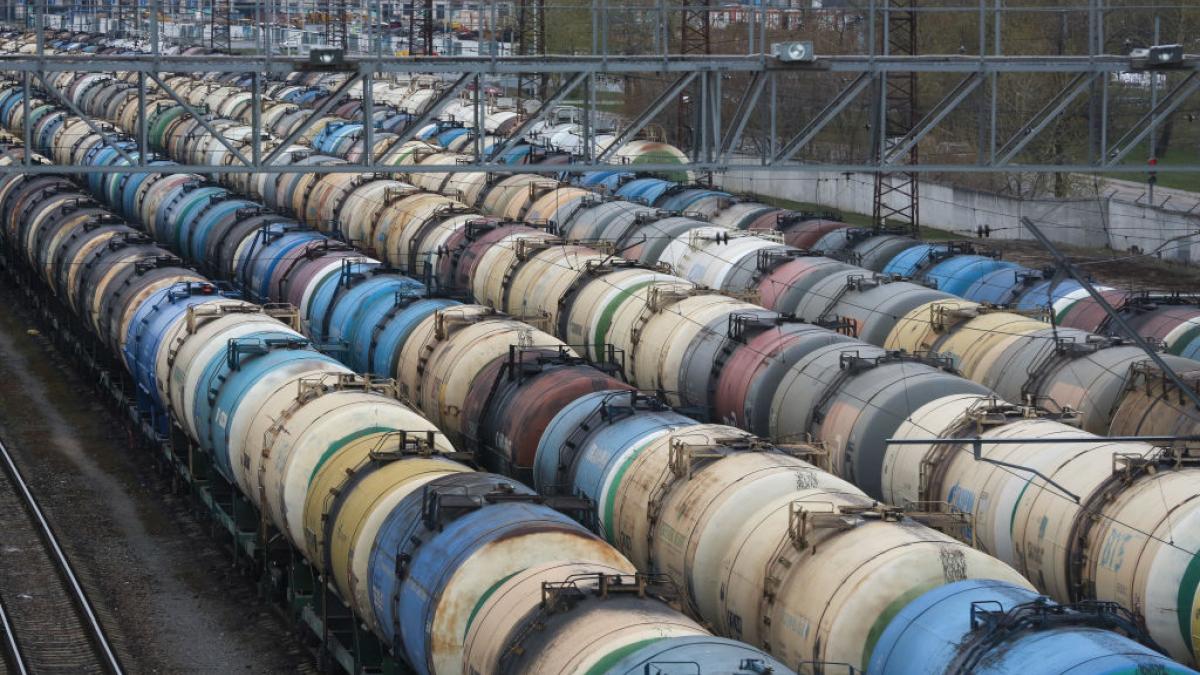India continues its record purchases of Russian oil, taking advantage of lower prices due to Western sanctions; In January 2023, it jumped to 1.27 million barrels per day, according to “Vortexa” shipping analytics.
Today, Monday, February 6, 2023, the Financial Express newspaper stated that India’s appetite for Russian oil has reached unprecedented rates, and Russian supplies have outperformed supplies from traditional suppliers in the Middle East, for the fourth month in a row.
The newspaper refers to countries such as Saudi Arabia and other Gulf countries.
The high oil prices last year (2022), after Russia launched a war on Ukraine, and the OPEC + alliance followed a strict production policy, were the cause of frequent verbal spats between India and Saudi Arabia, according to what was seen by the specialized energy platform.
Russian oil to India
Russian oil exports to India increased in January (2023), to record 28% of the total imported crude, compared to only 1% before the start of the war in Ukraine on February 24, 2022.
India will continue to buy crude – including Russian oil – from anywhere in the world. To meet its energy needs, according to the statements of an official Indian source, on the sidelines of the Energy Week conference currently being held in New Delhi.
European countries, the Group of Seven industrialized countries and Australia imposed a ceiling on the price of Russian oil at $60 a barrel on December 5, 2022.
The countries thus aim to reduce the revenues from Russian oil exports to prevent Moscow from continuing the war on Ukraine.
This was followed by a price cap for Russian derivatives, which took effect on Sunday, February 5 (2023), at $100 per barrel of diesel and $45 per barrel of vehicle fuel.
Continue to buy
“New Delhi does not impose sanctions on Russian oil as it does for crude from Venezuela and Iran, so anyone can buy and insure shipments outside the European Union,” the Indian source said.
The Russian oil export position out of India’s total crude imports improved, increasing to 28% in January 2023, compared to 26% in December 2022.
Iraq ranked second with 20%, Saudi Arabia 17%, while US exports improved to export to India 9% of the total needs of the Asian country last month, and UAE exports improved by 8%.
The exports of the three Gulf countries to India improved by 1% each last month, while New Delhi’s imports from African countries fell from 9% to 6%.
Despite capping the price of Russian oil at $60 a barrel; most of it trades for about a third less, at $40 a barrel.
The largest amount of Russian oil exports flows into Asian oil refineries, and is concentrated in India and China in the first place, since Moscow’s invasion of Kiev.
In a related context, Indian Prime Minister Narendra Modi announced that his country will continue to develop the oil refining industry and import liquefied natural gas in 2030, according to Bloomberg Agency, today, Monday, February 6, 2023.
Increase refining capacity
The Indian Prime Minister said that his country intends to increase oil refining capacity to 450 million tons annually by the end of the current decade, from 250 million tons – currently – and intends to increase the capacity to import liquefied gas.
Modi added, during the energy forum held in Bangalore, in which officials from several countries, such as Saudi Arabia, Russia, America and China, participate through 30,000 delegations: “From industry to offices to production lines and homes, Indian demand for energy will continue to rise.”
India is the third largest energy importer and the third largest emitter of carbon, and has committed to achieving carbon neutrality by 2070.
Many question the Asian giant’s ability to deliver on its climate pledges on time. It relies on coal to generate three-quarters of its energy needs.
Modi said that natural gas will become a source for generating India’s electricity needs by 15% in 2030, compared to 11% – currently -.
He added, “This will happen with the state’s plan, which aims to increase the share of non-fossil fuels in the energy mix to 50%, by increasing the capacity of solar energy and storage batteries in addition to green hydrogen.”
He pointed out that green hydrogen investments will amount to about one trillion rupees (12.1 billion US dollars) by 2030, to produce about 5 million tons.
India is in discussions with owners of different industries; To learn how to rely on hydrogen instead of fossil fuels.
With those remarks, the Indian Prime Minister reaffirmed his country’s commitment to the energy transition, “a process that has begun.”
related topics..
Also read..

Leave a Reply